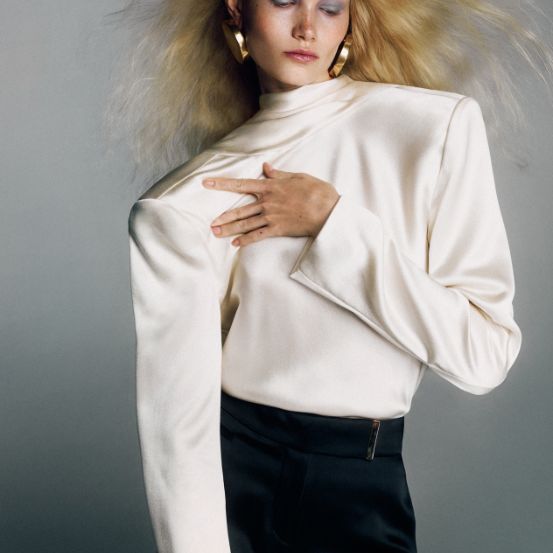Now it seems a completely dystopian reality and, for that very reason, impossible, but there were times when cigarettes were accepted on almost every occasion of our lives: in public transport, in the workplace, in shopping centers, in restaurants, even on broadcast TV, live - that seemed to have an extra glamor whenever the presenter pulled from his pack of Chesterfield or Marlboro. This is a journey, unsuitable for people under 18, to an era when smoking was as glorified (or even most) than physical exercise.
Now it seems a completely dystopian reality and, for that very reason, impossible, but there were times when cigarettes were accepted on almost every occasion of our lives: in public transport, in the workplace, in shopping centers, in restaurants, even on broadcast TV, live - that seemed to have an extra glamor whenever the presenter pulled from his pack of Chesterfield or Marlboro. This is a journey, unsuitable for people under 18, to an era when smoking was as glorified (or even most) than physical exercise.

It is not humanly possible to count the number of cigarettes (hundreds? thousands?) that Don Draper has smoked over the seven seasons of Mad Men, but it is relatively easy to know how many cigarettes Jon Hamm, the actor who gave life to the character, smoked: just a few or maybe not even one. And that’s because the cigarettes used in the production were not real, but made from herbs, free from tobacco and nicotine. Throughout 92 episodes, Mad Men depicted the backstage of a 1960s advertising agency, where some of the biggest accounts were, precisely, from tobacco companies, and where the environment — a dangerous mix of huge amounts of work, money, sex and fame (and a lot of misogyny, it should be noted) — was populated by an invisible cloud of smoke. Almost all the protagonists smoked cigarette after cigarette, in almost every scene, with the exception of Peter Campbell, portrayed by Vincent Kartheiser. Mad Men was a success, applauded by the public and the critics alike. But was it, in general, a bad example for viewers? Maybe not. As a former advertising veteran (one of the real “mad men”, if you like) wrote at the end of the series on CNN's website: And so as "Mad Men" entered its final season, I found myself wondering if there was a way to bring attention to damage that seven seasons of smoking on a program that had shaped the way we dressed and decorated our offices and homes might also be doing on the impressions and behaviors of young watchers? Then, with the penultimate episode came Betty's diagnosis: aggressive lung cancer. And suddenly the fictional world of "Mad Men" collided with the facts about women's lung and heart health and the array of deadly illnesses linked to women smoking […] I am truly grateful to the creators of the fictional world of "Mad Men" that they have allowed the consequences of real world choices to touch one of their iconic characters. The show has been full of cultural and political milestones, but at long last they have given us a small window of opportunity to appreciate the results of the tobacco addiction that flourished on screen.”
Mad Men is the easiest example when it comes to tobacco. It is, if we like, the obvious cliché, the expected association. But Mad Men was not that far from the reality, even the one that outside advertising agencies. Until the mid-1970s, in the United States, and later, all over the world, smoking was allowed everywhere: cafes, restaurants, shops, mini markets, shopping centers, hairdressers, hospitals, schools… The list it is infinite and, today, it seems as unlikely as something out of a movie... or a TV series. Many of us still remember those “old days” when television presenters stood up to put out a cigarette in an ashtray that was nearby, or how the news anchors presented themselves with a cigarette, as if it was just another part of their outfit — like tie or a cufflink. For decades, smoking was an act associated with something "cool", or something that conveyed "glamor", largely because of the influence of cinema, which early adopted cigarettes as an extra prop in films, and it was only when studies began to prove the nefarious consequences of the act that several governments decided to impose restrictions on both the sale and consumption of tobacco. In Portugal, it was in January 2008 that the so-called “Tobacco Law” came into force, approved months before. It would change, forever, the social and behavioral habits of the Portuguese. From then on, smoking was banned in closed public spaces, a gradual shift caused, above all, by public health issues, and also with the awareness that it was necessary to respect the desires, and the freedoms, of other people, the non-smokers. Despite having initially suffered some resistance, the law was generally accepted by the population. And if today, we smokers, miss the time when we could light a cigarette anywhere, we are also aware that now, if we continue to do it, in the proper places for the purpose, it is at our own risk, without harming anyone else. There is no such thing as "the good old days", the future is now, and it belongs to all of us — to those who continue to prefer addiction (bad, harmful, possibly fatal) and to those who have never had it, or who have already turned their backs on it. Anything can be allowed, except losing respect for the will of those who are by our side. I'm sorry, Marlboro, even I, who remain loyal to you, am well aware of that.
Most popular


Relacionados
.jpg)

Réveillon no Hotel Tivoli Avenida Liberdade: 1 hotel, 3 experiências para celebrar a passagem de ano
22 Dec 2025
.jpg)



